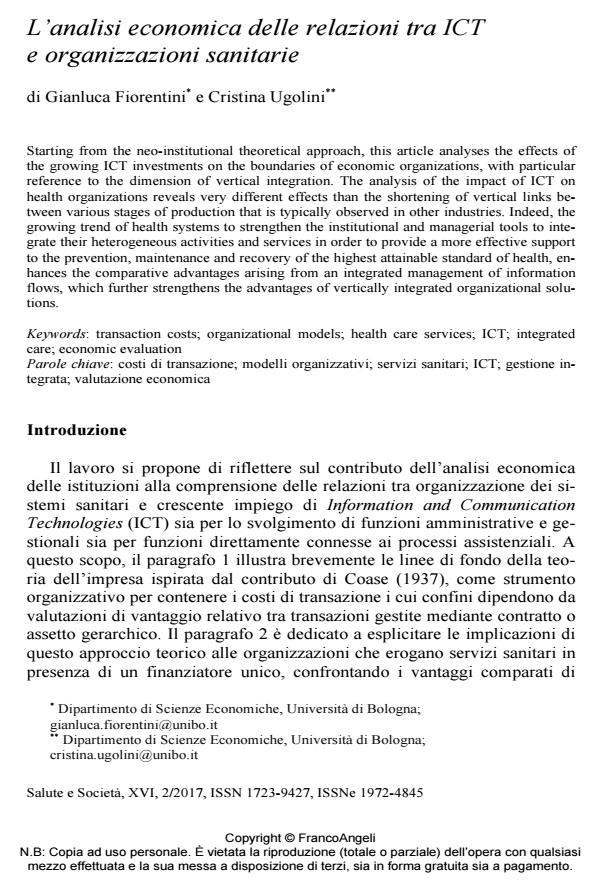L’analisi economica delle relazioni tra ICT e organizzazioni sanitarie
Titolo Rivista SALUTE E SOCIETÀ
Autori/Curatori Gianluca Fiorentini, Cristina Ugolini
Anno di pubblicazione 2017 Fascicolo 2017/2
Lingua Italiano Numero pagine 23 P. 42-64 Dimensione file 133 KB
DOI 10.3280/SES2017-002004
Il DOI è il codice a barre della proprietà intellettuale: per saperne di più
clicca qui
Qui sotto puoi vedere in anteprima la prima pagina di questo articolo.
Se questo articolo ti interessa, lo puoi acquistare (e scaricare in formato pdf) seguendo le facili indicazioni per acquistare il download credit. Acquista Download Credits per scaricare questo Articolo in formato PDF

FrancoAngeli è membro della Publishers International Linking Association, Inc (PILA)associazione indipendente e non profit per facilitare (attraverso i servizi tecnologici implementati da CrossRef.org) l’accesso degli studiosi ai contenuti digitali nelle pubblicazioni professionali e scientifiche
Starting from the neo-institutional theoretical approach, this article analyses the effects of the growing ICT investments on the boundaries of economic organizations, with particular reference to the dimension of vertical integration. The analysis of the impact of ICT on health organizations reveals very different effects than the shortening of vertical links between various stages of production that is typically observed in other industries. Indeed, the growing trend of health systems to strengthen the institutional and managerial tools to integrate their heterogeneous activities and services in order to provide a more effective support to the prevention, maintenance and recovery of the highest attainable standard of health, enhances the comparative advantages arising from an integrated management of information flows, which further strengthens the advantages of vertically integrated organizational solutions.
Parole chiave:Costi di transazione; modelli organizzativi; servizi sanitari; ICT; gestione integrata; valutazione economica
Gianluca Fiorentini, Cristina Ugolini, L’analisi economica delle relazioni tra ICT e organizzazioni sanitarie in "SALUTE E SOCIETÀ" 2/2017, pp 42-64, DOI: 10.3280/SES2017-002004